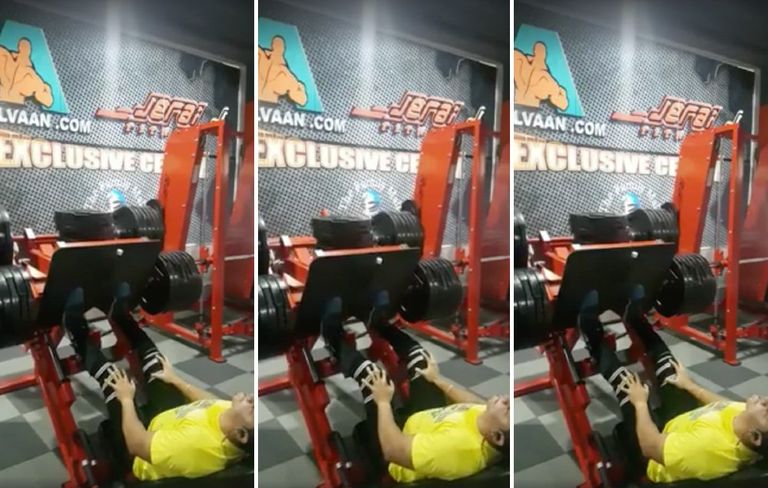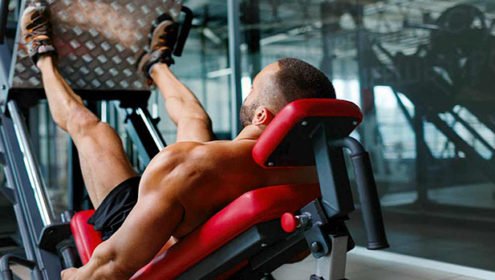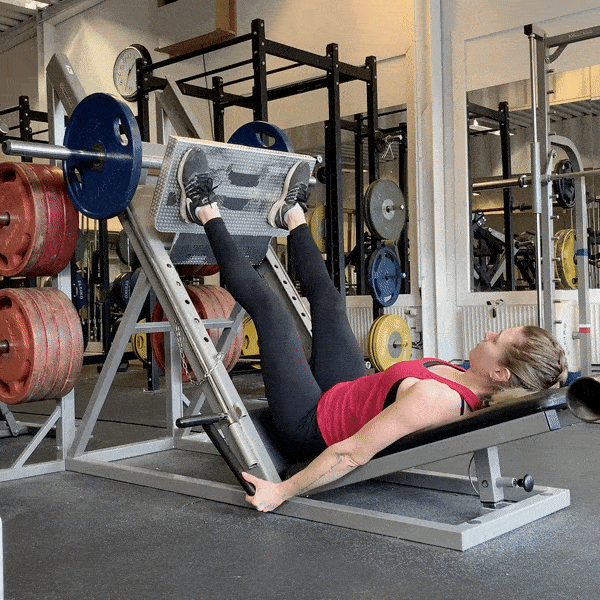“The biggest problem I see with the leg press is the inclination to put too much weight on the machine, potentially causing the pelvis to rotate away from the back rest as you lower the weight.
Is leg press even worth doing?
But while there's no doubt the barbell move is one of the finest lower-body exercises, that shouldn't blind you to the many benefits of the leg press. For an exercise with quite a short range of motion, it's highly effective at training the quads, glutes and hamstrings.
What are the problems with leg press?
One of the most common risks associated with incorrect leg press usage is lower back injuries. When you arch your lower back off the seat, you place excessive strain on your spine and the surrounding muscles. This can lead to herniated discs, muscle strains, and even long-term back problems.
Is The leg press bad for your back?
The leg press can put excessive pressure on your spine if there is any curving in your low back. This curving often results in having hamstrings that are too tight – in order to extend your legs out in front of you, your back curls to reach further.
Why should seniors avoid leg press?
Leg presses
In order to operate the machine properly, you need to lean back on a flat bench and push the weights with your feet. This can cause severe damage to the lumbar spinal disc by placing pressure on the spine and flattening it's natural arch.
Why you should not do leg press?
Leg press cons
- You need a leg press machine to do the exercise.
- You risk working one leg harder than the other.
- There's a risk of rounding your back if you try to press too much weight.
- You risk injuring your knees if you try to press too much weight or lock your knees when extending your legs.




Is locking bad in leg press?#locking #legpress @thepfcclub @chiragbarjatyaa pic.twitter.com/rCuTLtowFC
— Kamal Saini (@KOACHKAMALSAINI) June 11, 2023
Is leg press bad for your knees?
Engaging in excessive or improper leg press exercises can accelerate the progression of knee osteoarthritis and worsen symptoms. In addition to the conditions mentioned above, leg press exercises can exacerbate other knee injuries, such as ligament strains or tears, meniscal injuries, and cartilage damage.
Frequently Asked Questions
Is The leg press bad for you?
The leg press isn't inherently a bad exercise or a dangerous piece of equipment. But like anything, if you load it up too much, bad things can happen to good people. Believe it or not, you can actually get a better and safer training effect with the leg press while using much lighter weights.
Why is leg press not as good as squats?
Leg Press Isn't as Good for Functional Strength
And that's precisely why you can't ditch the squat. Because the leg press provides back support that the free weight squat doesn't, you aren't getting the same core activation when you ditch the barbell for the machine.
Why is leg press frowned upon?
Leg presses are NOT for everyone. Many will go far too deep (knees to the chest which causes a very bad flexion of the spine) and is not good for your knees (shearing forces). This can end up being a folding bastardized hack squat with way more risk than reward potential.
FAQ
- Is The leg press good for you?
- Benefits of Leg Press The leg press develops and strengthens several muscles, such as the quadriceps, hamstring, and gluteal muscles. Since the calf muscles play a critical role in supporting these muscles, the calf muscles also become stronger.
- Why is leg press bad
- Nov 8, 2016 — It's actually poor form, and you should lower the weight for single-leg lifts. Take a slower movement through reps for more time under tension
- Why not to do leg press?
- Leg press cons There's a risk of rounding your back if you try to press too much weight. You risk injuring your knees if you try to press too much weight or lock your knees when extending your legs. You may be tempted to pile on more weight than you can handle.
Why leg press is bad
| Are leg presses bad for your lower back? | Seated leg press It primarily targets the quadriceps muscles of the leg. However, it can stress the lower back significantly. Squats and leg presses may cause low back injuries if performed with poor form. |
| What type of movement is a leg press? | The leg press is a compound weight training exercise in which the individual pushes a weight or resistance away from them using their legs. The term leg press machine refers to the apparatus used to perform this exercise. |
| What is squat form on leg press? | And really really just trying to contract the quads control the downward motion. Obviously explode up not to the point where you actually lock the legs. Out. |
- What type of exercise is a squat press?
- And light up your shoulders abs in quads what more can you ask for grab a dumbbell hold like a baseball bat sink down into what is ideally. Your perfect depth.
- What type of movement is a squat?
- Squatting is widely used in physical therapy and sport training as a closed-kinematic chain exercise involving all lower limb joints and many muscles. It is one of the most important elements in building leg strength.
- Is leg press a flexion or extension?
- Extension Leg press is a machine-based exercise that involves pushing through the feet to perform an extension task, usually from a position of deep hip and knee flexion.
